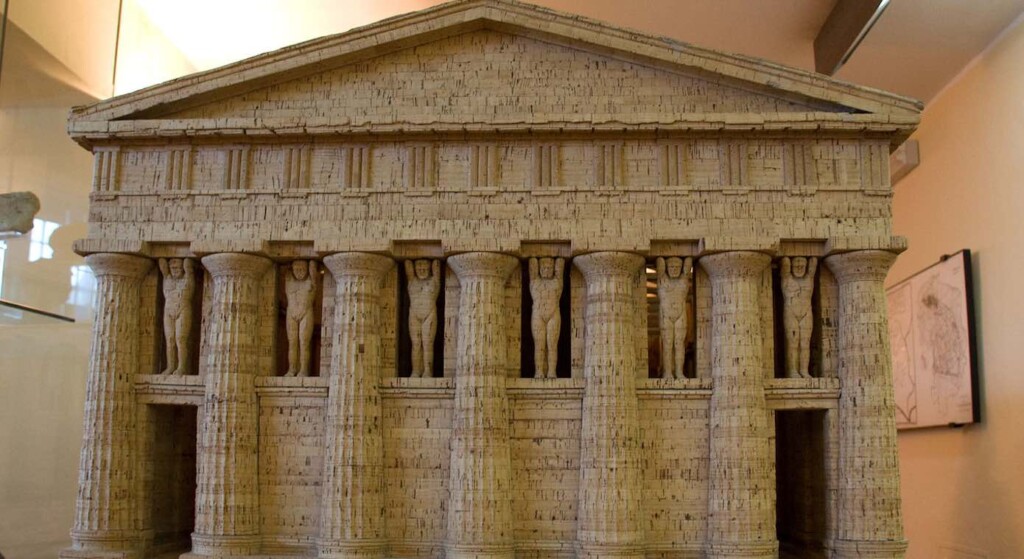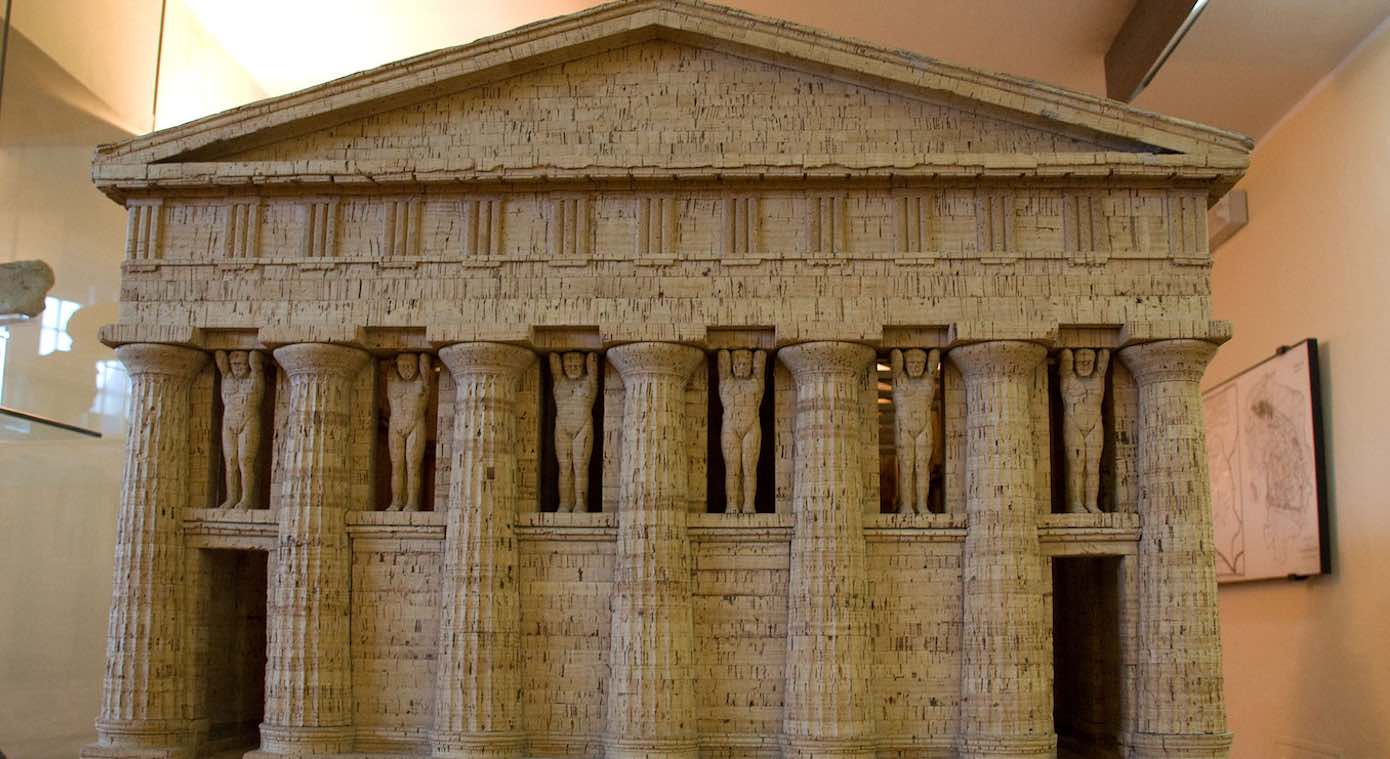
A 20-year restoration project on the island of Sicily has led to the reconstruction of a 26-foot (8-meter) tall statue of Atlas, the god who holds up the world in Greek mythology.
38 of these massive statues once held up the Temple of Zeus, built in the Golden Age of Ancient Greece and the largest Doric-style structure ever conceived. Located at a place called the Valley of the Temples near Agrigento, it was never finished before the city was captured by the Carthaginians.
Rather than letting the sandstone components of the Atlases lie around, restorationists and sculptors re-assembled some of them to form one of those 38 statues and mounted it in front of the remains of the Temple of Zeus as a guardian.
“The Atlas will become one of the highlights of the Valley of the Temples,” said Francesco Paolo Scarpinato, a cultural heritage assessor, in a joint statement with the Sicilian governor, Renato Schifani. “We can finally introduce this imposing work to the international community.”
Dating back to the 5th century BCE, the ancient Greek city-state of Agrakas had created one of the period’s most prosperous urban areas, crowned by a flurry of temple building from which the Temple of Zeus was to be the most grand.
Fortunes rise, but often fall, and conquered by Carthage, Rome, and eventually by an industrious Italian state looking to build a few more cities, Agrigento and its temples became archaeological rubble.
In 1818, a young British archaeologist named Cockerell discovered that large sandstone blocks lying about the Valley of the Temples were not, in fact, part of the temples themselves, but of a then-unknown number of massive human sculptures.
MORE ITALIAN ARCHAEOLOGY: 2,000-Year-Old Home Found Under a Seaside Playground May Be Pliny the Elder’s Villa
His research and surveys showed that the 38 Atlases were frozen in between the large Doric columns in the act of holding up a massive roof that was never built.
Now today, a giant steel plaque is the mount for the remade Atlas, whose pieces are secured to shelves. The project was initiated in 2004 as part of a collaboration between the Valley of the Temples archaeological park and the German Archaeological Institute of Rome. Together, they described and catalogued 90 components from 8 different Atlases.
ALSO CHECK OUT: Tiny Italian Town Dug Up an Extremely Rare Roman Temple while Trying to Build Supermarket
“The work we have carried out on the Atlas and the Olympian area is part of our mission to protect and enhance the Valley of the Temples,” said Sciarratta. “Bringing these stone colossi back to light has always been one of our primary objectives.”
Agrigento is an amazing part of Italy to visit today. Along with the Valley of the Temples, there are several fantastic beaches, and the city itself is old, multicultural, and gorgeous.
SHARE This Inspiring Rebuild With Your Friends In Need Of A Summer Destination…




















